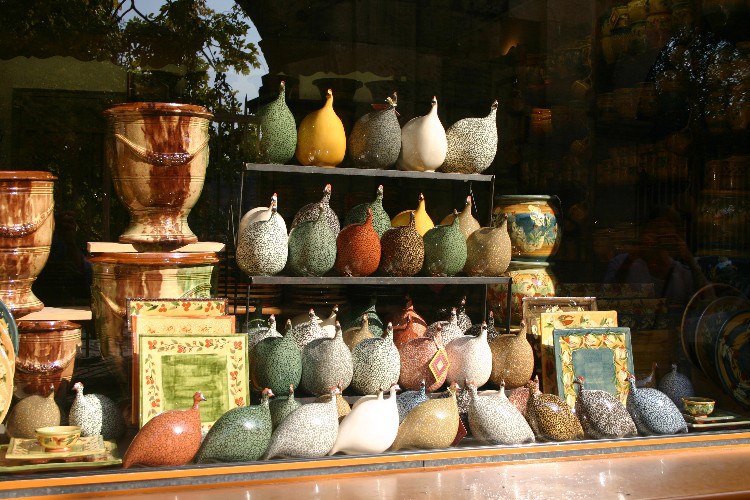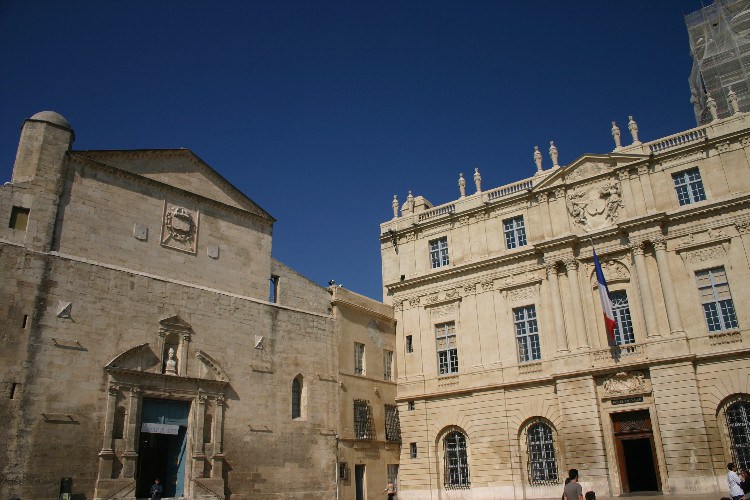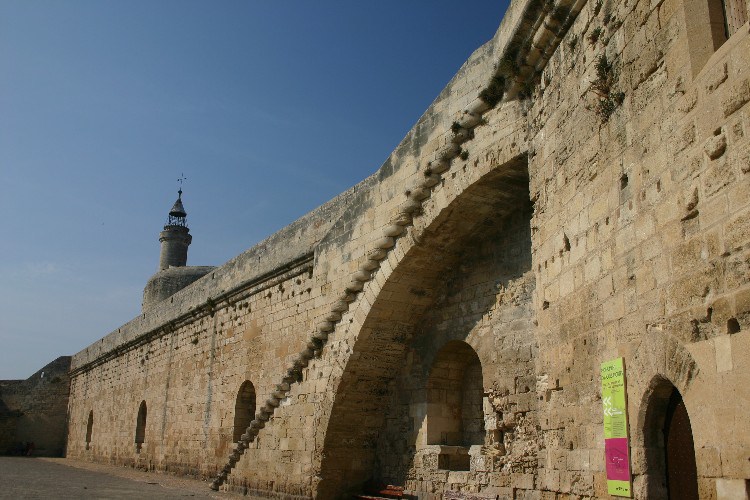Arles: The Gateway to the Camargue
Saturday, October 2nd, 2004: Arles, France
Saturday is market day in Arles. We pull off the highway and right into a traffic jam caused by the market. Cars are zipping in and out of invisible parking places (called sidewalks), adding to the mayhem. We finally find a place to park on the top level of a multi-story parking garag and walk out the back entry and find that we are on the main street of Arles, totally closed to traffic because of the market. Directly across the street is the Roman theatre, we walk around it without entering, having seen a finer example in Orange. We discover a wonderful shop nearby full of Provençal potteries, including these wonderful hens.
A Circular Tour
From here we walk in a big circle through the city, past the Arena, and into the church of St. George, the patron saint of les gardiens, the cowboys of the Camargue, where we discover a rehearsal in progress for a recital by a soprano with a lovely voice. We sit in the back of the church and listen for a few minutes before we move on to the reconstruction of Van Gogh’s bedroom (the maison jaune was destroyed during the war), up to the Rhône, past the Thermes de Constantin, the only part of Constantine’s great palace left standing.
We complete our loop, and decide to lunch at a lovely looking hotel, just off the square of the Roman theatre. The restaurant we choose, Le Calendal, serves a delicious buffet at lunch in its beautiful golden yellow sunlit garden courtyard. We enjoy the atmosphere almost as much as the food.
The Gateway to the Camargue
Arles is the gateway to the Camargue, the broad delta of the Rhône, and after lunch we head out of town to explore it. As we go back to the car, we discover the market is gone, not a trace left. The Camargue is a vast wetland, much of it now a national park, which supports a huge array of bird life including flocks of flamingos, as well as the famed white horses and black cattle. It has also been, for many centuries, a major source of salt, called fleur du sel, formed when seawater evaporates. Today, fleur du sel is gourmet salt, and is priced accordingly. Our drive through the Camargue is beautiful; close to Arles we head through yet more vineyards, but the farther away we get the wilder the land gets, until close to Les Stes.-Maries de la Mer, where the Petit Rhône meets the Mediterranean, and where we find – yet another beach resort!
Louis IX’s Mediterranean Port
After we walk on the beach for a few moments, we continue on our way, this time to Aigues Mortes (Dead Waters), the royal town established by Louis IX in the 1200s, in order that the French crown could have a Mediterranean port – as most of what is now southern France was not yet part of France at that time. From Aigues Mortes, whose walls still stand complete, Louis launched both the 6th and 7th Crusades, sending 1500 ships to battle in the 6th Crusade Today, Aigues Mortes is a long way inland, the delta having expanded seaward, and is connected to the sea only by the Canal du Rhône à Sète.
We have gone in a big circle, and at Aigues Mortes we are only a few kilometres from Montpellier and home.
We head home to our simple supper of cheese and wine, and to bed.










Comments